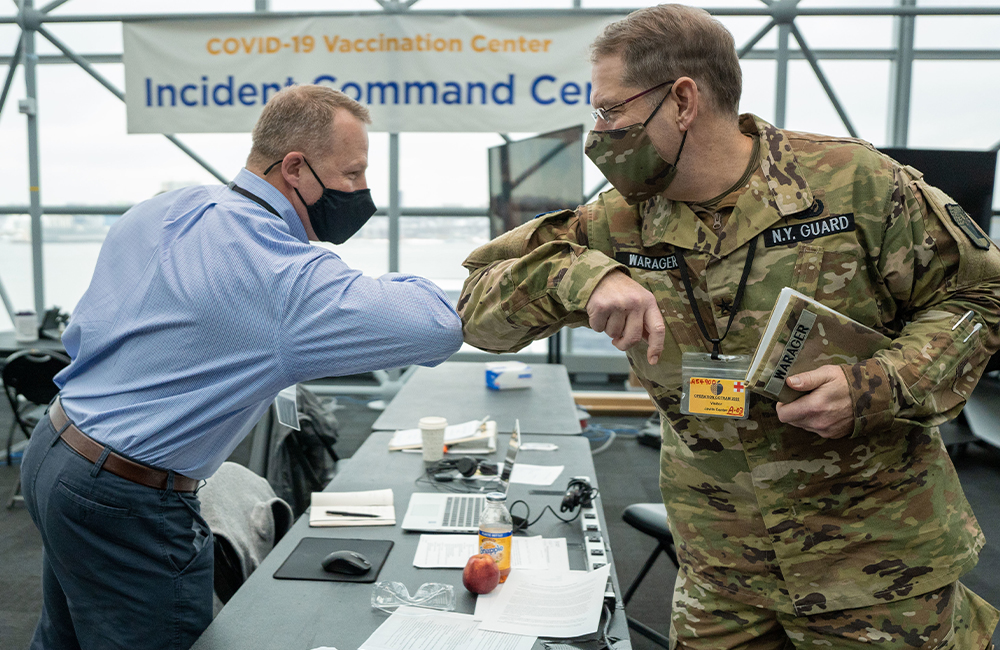Data is at the Heart of Improved Veteran Health Care
VA is improving data management to enhance veteran health care and services.

The Department of Veterans Affairs is bolstering its IT infrastructure and enhancing data management to improve the veteran experience and health care delivery with innovative services like its electronic health record (EHR) and new LGBTQ+ Health Program.
“What we’ve seen over the past couple of years … is a real commitment to putting the veteran and the employee at the center. How do we enhance the veteran relationship? There’s this relentless pursuit of the experience,” Ryan Vega, VA’s chief officer of health care innovation and learning, said during AFCEA’s Health IT Summit last month.
Laura Prietula, acting deputy CIO for VA’s Electronic Health Record Modernization Integration Office, said that enhancing veterans’ experience all comes down to the data. As part of VA’s EHR modernization, the agency is migrating VistA data to its new Cerner platform to create a single, common record.
“That, in the end, will allow us not just to ensure that the data is there in a good, clean, curated capacity, but also … putting all the VistAs into the cloud and putting all the instrumentation to be able to link the experience,” Prietula said. “That combination of activities will inform IT better … all of us work together to ensure that we have the right metrics, the right instrumentation and the right data to inform those decisions going forward.”
To effectively provide the IT infrastructure to support these enhancements to the veteran experience, VA is embracing innovations like software-as-a-service (SaaS), cloud and modernized approaches to software development like DevSecOps. Dave Catanoso, director of VA’s Enterprise Cloud Solutions Office, said that as the agency moves data to the cloud, it is creating data lakes to store structured and unstructured data at any scale and support a variety of applications.
“We’re unlocking a lot of power with the infrastructure of cloud to provide the scalability and the capacity to host enormous data sets that might be difficult to do in a traditional environment,” Catanoso said. “The enormous capacity that is at our fingertips for computational analyses with those large data sets are not possible without that scalability and ability to apply services that providers bring to bear.”
Prietula described VA’s EHR initiative as a “modernization of business practices” to improve the way health care is delivered. To drive this modernization, VA is viewing IT as an enabler of improved business practices. Vega said that VA is being progressive in its investments to drive transformational change. The agency is investing in simulated environments to test solutions before launch to ensure effectiveness and understanding of a new technology.
“It’s not just saying, ‘here’s a new piece of technology or equipment.’ It’s fully immersing our providers and our practitioners in that experience, and really understanding where there’s compatibility opportunities or better interoperability opportunities,” Vega said. “This could extend to all new technologies that may emerge.”
As VA continues to better connect people and technology to improve veteran care, Prietula said the agency is becoming “hyperconnected” to providers and patients to ultimately improve workflows and the veteran experience. VA is leveraging vast amounts of data to better monitor veteran care and improve services like telehealth and EHRs. To do that, VA is honing in on standardization and interoperability.
“The lack of standardization may not just be because of the data models themselves, but policies in place,” Prietula said. “This is an opportunity for VA to change the way that we deliver health care and improve that. … We have made significant improvements as well in the way that we understand the data.”
Looking ahead, VA is building out a core set of capabilities to stay competitive in the health care environment. The agency is looking to develop new digital health technologies and programs to personalize care for veterans. Data transformation will be the cornerstone of VA’s future of health care. The agency is leveraging synthetic data and AI to generate improved patient care models.
“What you can do is begin to reimagine the role of the health system and moving it upstream, but also building the capability to invite these individuals into that health care delivery system,” Vega said.
VA is using data to develop new programs that deliver improved health care to minority populations, like the LGBTQ+ community. Prietula and Vega said the agency’s new LGBTQ+ Health Program is establishing new data models for patient identification and is layering IT processes to help minorities navigate the health care systems. From these recent programs, VA will leverage lessons learned to build out future offerings.
“It’s innovation with a purpose and modernization with a goal, so that we can transform in a way that is amenable to the people, but also the technology and future to be sustainable,” Prietula said.
This is a carousel with manually rotating slides. Use Next and Previous buttons to navigate or jump to a slide with the slide dots
-

How Agencies are Upskilling the Workforce in AI
Federal officials are putting in place new training and education methods to ensure its overall workforce understands the technology.
3m read -

Building Better Data Governance Across FDA
The agency is using emerging technology to tackle its data challenges.
19m listen -

A Prepared Workforce is Key to Cyber Resiliency
Strong training strategies and emphasizing cyber hygiene basics enhance security practices at federal agencies.
2m read -

Strategies for Effective Data Modernization
Data is the lifeblood of critical decisions and streamlines operations across the government, but many agencies struggle with inconsistent standards.
33m watch




